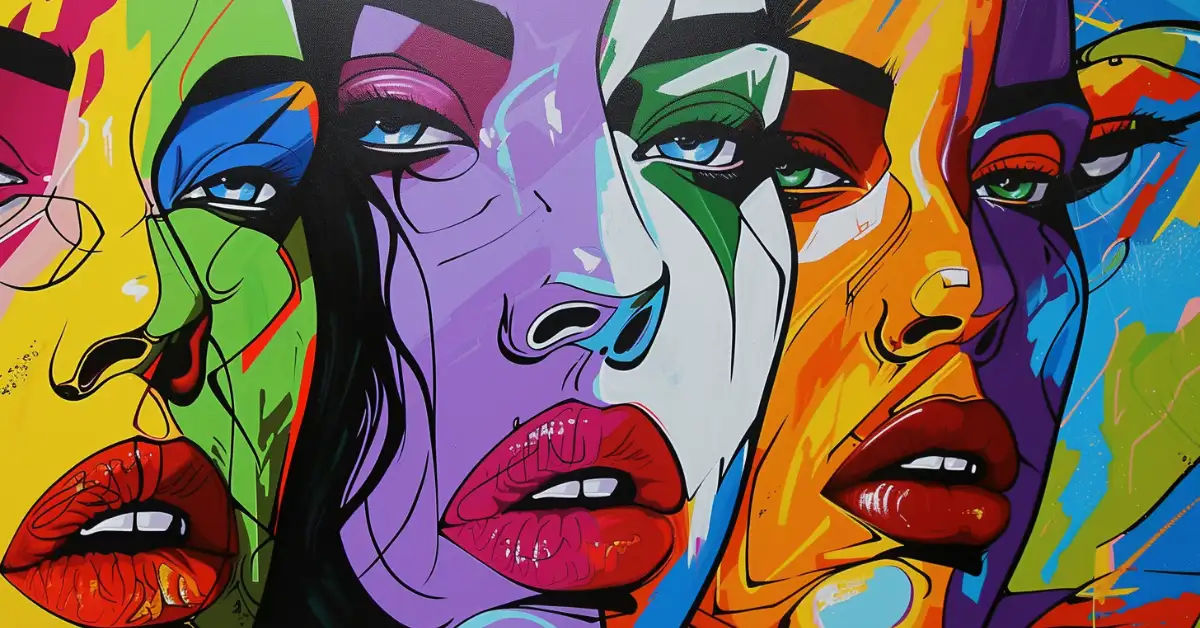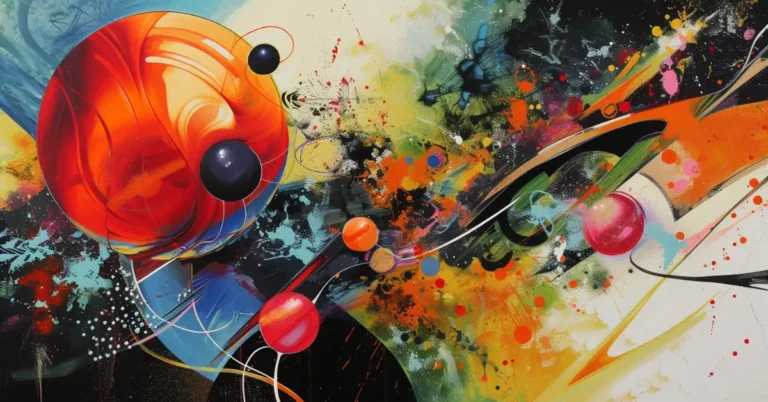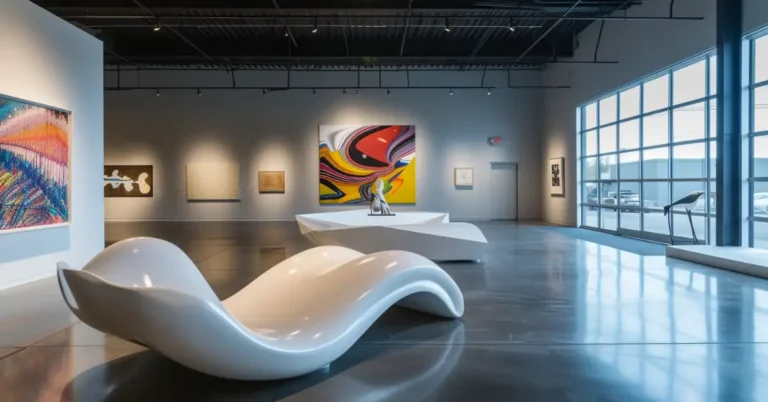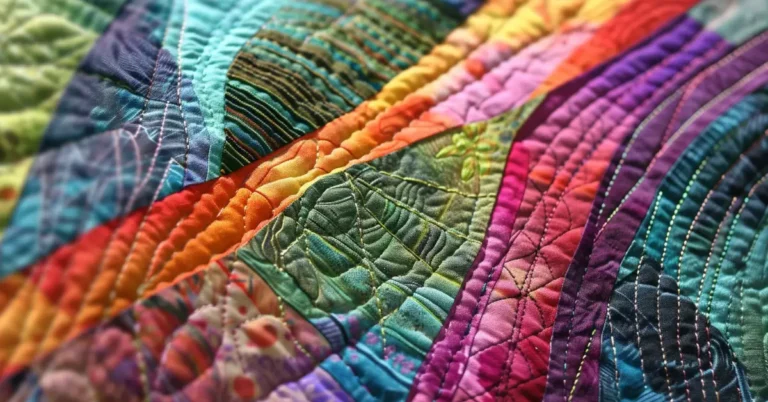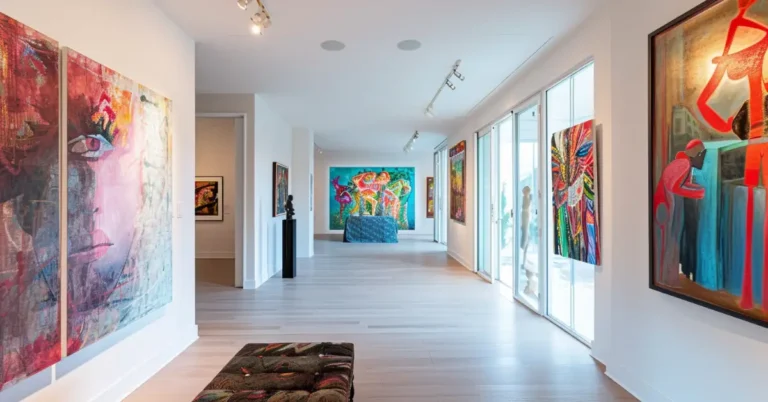Contemporary Pop Art Reimagined: Where the Everyday Pops with Wonder! Step into a world where the commonplace is re-crafted into the extraordinary, where contemporary maestros take the baton from Warhol and Lichtenstein to challenge our gaze. Vibrant colors clash with commercial culture, turning the mundane into masterpieces and sparking a dialogue that’s as fresh and provocative as ever.
Pros:
✅Gallery Quality Printing
✅Premium Decor
✅Superior Handcrafted Quality
Cons:
❌Please check out Sizes and Frame-Colors to find your Perfect Piece
Contemporary Pop Art
Origins and Historical Context
When we think of contemporary pop art, vibrant colors and bold representations of popular culture instantly spring to mind—but it’s the movement’s fascinating inception in the mid-20th century that truly sets the stage for its iconic status.
Contemporary pop art transforms the familiar into the extraordinary, challenging our perceptions and making the ordinary burst alive with unexpected meaning. It’s a testament to the genre’s enduring appeal that today’s artists continue to push boundaries, ensuring the conversation sparked by iconic pop artists remains as lively and relevant as ever.
The Birth of Pop Art
The stirring of what we now know as Modern Pop Art emerged amidst the roiling post-war society of the late 1950s. In Britain, a group of artists called the Independent Group began dissecting the imagery of mass media, elevating the mundane to the pedestal of fine art. They sought to blur the boundaries between high art and popular culture, leading to the movement’s dynamic eruption.
Influential Movements and Precursors
Modern Pop Art didn’t appear in a vacuum; it was nurtured by previous art movements like Dada, which challenged the conventions of art. Dada‘s use of everyday objects in art influenced Pop artists, who incorporated items such as comic strips and consumer goods into their work, making a bold statement about the postwar commercial boom.
Transatlantic Developments
Across the Atlantic, American artists of the 1960s adapted the principles of British Pop Art and infused it with their flavor. The movement quickly caught on in America, where it resonated with the public’s fascination with celebrities, advertisements, and the burgeoning consumer culture. It reflected the changing dynamics of a society that was rapidly evolving with the times.

Mr. Brainwash at Bender Gallery, NC.
Contemporary Pop Art Evolution
We’ve witnessed an extraordinary journey in the world of contemporary pop art, a vibrant transformation that has kept it pulsing with life from its mid-century roots to its current iterations.
The Rise of Pop Art – American vs British
American pop art emerged in the 1950s, challenging traditions with its bold reflection of consumer culture and everyday imagery. Artists like Claes Oldenburg and Alex Katz transformed the mundane into high art, contrasting the more academic British version, which edged more toward humorous criticism of post-war American consumerism.
Neo-Pop Movement
The Neo-Pop movement, or neo-pop, was a resurgence of the pop art genre that took hold in the 1980s, featuring stars like Julian Opie, who infused pop art with a new aesthetic and technological bent. It connected classic pop art’s ethos to the modern day, resonating with a generation facing the rise of the digital age.
What is Happening with Pop Art Today?
Contemporary pop artists continue pop art into the 21st century, drawing from global influences, including Japan’s unique graphic culture. Exhibitions at venues like Tate in New York showcase how today’s modern pop art incorporates diverse contemporary issues and aesthetics, proving that as long as there is popular culture, pop art will reflect it, adapt, and evolve.

Wine First, Talk Later. Nelson De La Nuez
Aesthetic and Methodology
When we think of contemporary pop art, we’re immediately drawn into a vibrant array of bold colors and recognizable imagery that blurs the lines between high art and popular culture.
Stylistic Characteristics
Contemporary pop art continues the tradition of its predecessors by embracing and reimagining everyday objects and media imagery. This art form juxtaposes paintings of iconic figures against a backdrop of mundane objects, creating a striking contrast. Images are plucked from their usual contexts and placed in scenarios that challenge conventional perceptions, a method deeply rooted in the camp and kitsch aesthetic. Designs often feature a bold style, leveraging a variety of colors to make a statement that’s as engaging visually as it is conceptually.
- Color: Vivid and often used in flat, large blocks to capture attention
- Portraiture: Features a range from celebrity figures to cartoons, highlighting the diverse representation within the art form
- Design & Fashion: Influences and is influenced by contemporary fashion, exhibiting a mutual exchange particularly with hip, modern styles
Techniques and Materials
Contemporary pop art is diverse in its creation, combining traditional techniques with new media to craft pieces that are both reflective and forward-looking.
- Paintings & Sculptures: Artists make use of acrylics and mixed media to bring their visions to life, from canvas to three-dimensional sculptures
- Collage: By combining various elements from different sources, a collage creates a new narrative
- Digital Art: Technology has become an increasingly important tool, allowing for digital manipulation of images to produce unique artworks
The materials utilized in creating contemporary pop art are often as eclectic as the artworks themselves, incorporating anything from pristine canvas to repurposed items. This interplay of techniques and materials ensures that contemporary pop art remains a dynamic and relevant reflection of the cultural zeitgeist.

Shot Marilyns – Andy Warhol
Pop Art in Popular Culture
As we explore the vibrant world of contemporary pop art, it’s clear that its influence extends far beyond gallery walls. This art form has profoundly impacted both advertising and media, weaving its bold palette and imagery into the fabric of everyday life.
Influence on Advertising and Media
Contemporary pop art is virtually synonymous with the colorful tapestry of modern advertising and media. We see it when brands incorporate whimsical motifs and stark, striking visuals that pay homage to icons of popular culture. This isn’t incidental; advertisers deliberately use these eye-catching elements to draw us into a narrative that’s both familiar and fresh. In Los Angeles, billboards and commercials often feature a blend of sleek Hollywood glam with vintage pop art charm, a testament to the genre’s lasting resonance in commercial culture.
Crossover with Fashion and Design
Turn to Tokyo, and you’ll find contemporary pop art stitched into the very fabric of fashion. It’s in clothing lines bearing the effigies of pop culture icons; it’s in storefront displays that mirror the bold aesthetics of mass-produced art. Our attire has become a canvas, with designers blurring the lines between wearable items and art pieces. This crossover speaks to a society that not only consumes art but lives it, wearing its influences on its sleeves—quite literally.

Criticism and Impact
When we discuss contemporary pop art, we’re diving into a realm where high art meets low culture. The movement made waves by drawing from mass-produced objects and commercial culture, challenging what art could be.
Critical Reception
- Superficiality: Critics often deride the superficial aspect of modern pop art, finding it too simplistic or transient
- Glamorization of Consumerism: Pop art is sometimes accused of celebrating the very commercialism it comments on
- Skill Debate: The movement sparked a debate over artistic skill, contrasting the abstraction and intention of high art with its own intentional kitsch
The criticisms highlight the tension between pop art and the traditional art world, as it blurred the boundaries between high art and commercial imagery, a rebellion against the serious exclusivity and deep abstraction of abstract expressionism.
Legacy and Ongoing Influence
- Breaking Barriers: Contemporary pop art continued to defy the elitism of abstract expressionism
- Influencer of Culture: It didn’t just stay within gallery walls— modern pop art has left a lasting mark on fashion, music, and big business
- Youthful Energy: A generation grew up with its vibrant aesthetic, shaping their view on art’s role in society
By infusing life with art, the movement paved the way for lesser-heard voices to express themselves through imagery that was once considered expendable but now is part of our collective identity.
Key Artists and Works
Our dive into contemporary pop art wouldn’t be complete without exploring the influential artists and their iconic works that have shaped the movement. From canvas to sculpture, these works encapsulate the quintessence of pop culture and art intermingling.

American Pioneers
- Andy Warhol: Best known for his Campbell’s Soup Cans series, Warhol redefined the concept of art with his emphasis on consumer goods and celebrities, including the iconic ‘Marilyn Diptych’ portraying Marilyn Monroe
- Roy Lichtenstein: His comic-strip-inspired works, like ‘Whaam!’ and ‘Drowning Girl’, are central to the pop art narrative, showcasing American ideals in a satirical light
- James Rosenquist: His collage-style artworks tackled the bombardment of advertising, most notably in the piece ‘F-111’
- Jeff Koons: Merging kitsch and high culture, Koons’ sculptures, such as ‘Michael Jackson and Bubbles’, pushed the boundaries of conventional art
British Innovators
- Richard Hamilton: His collage ‘Just what is it that makes today’s homes so different, so appealing?’ set the stage for modern pop art in Britain
- David Hockney: Integrating personal life with artistic expression, works like ‘A Bigger Splash’ challenge the division between the two realms
- Peter Blake: Known for co-creating the album cover for The Beatles’ ‘Sgt. Pepper’s Lonely Hearts Club Band’, Blake’s work is synonymous with British pop culture
Contemporary Pop Artists
- Yayoi Kusama: Infamous for her hypnotic polka dots, Kusama’s installations transport viewers to a dimension where art and observer converge
- Takashi Murakami: The merger of traditional Japanese aesthetics with post-war American culture can be seen in Murakami’s works, with ‘Superflat’ being a notable style he popularized
We revel in these artists’ capacity to mirror and mold our pop culture landscape, solidifying their and contemporary pop art’s place in art history.
FAQ
What defines Pop Art?
Pop Art is characterized by its vibrant colors, appropriation of images from mass media, and reflection of consumer culture and modern life.
What is Pop Art in the 21st century?
Pop Art in the 21st century continues to engage with popular culture, often incorporating digital techniques and addressing contemporary issues through its bold and colorful aesthetic.
How different is modern art from contemporary art and Pop Art?
Modern art focuses on experimentation from 1860-1970, while contemporary art reflects current trends and mediums. Pop Art is a distinct movement within modern art that utilizes popular culture imagery.
What are the characteristics of Pop Art?
Pop Art is known for its vibrant colors, use of mass-media and popular culture imagery, and a blend of humor, critique, and appreciation of consumerism.
If you enjoyed reading this blog post on “Contemporary Pop Art“, please remember to leave a comment below to share your thoughts and experiences with us.
If you want to keep reading more from us, have a look at these articles.

